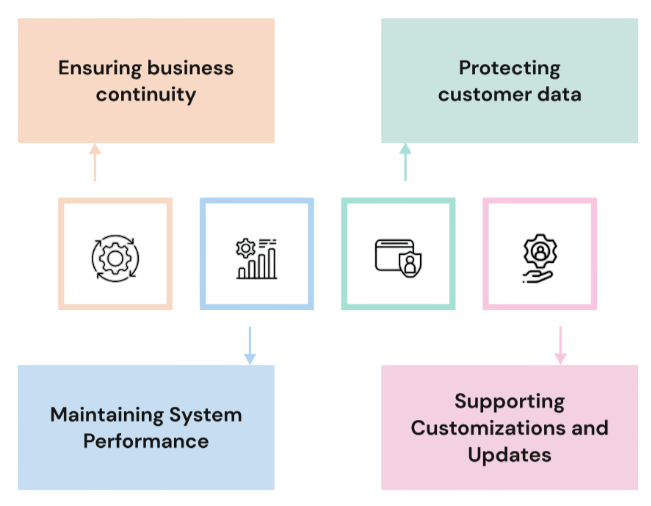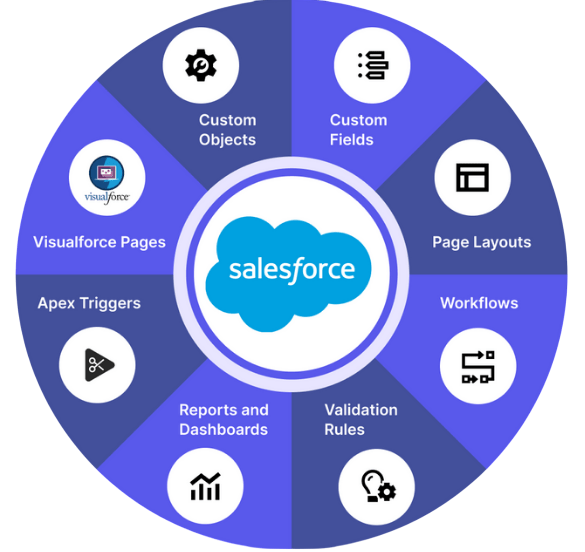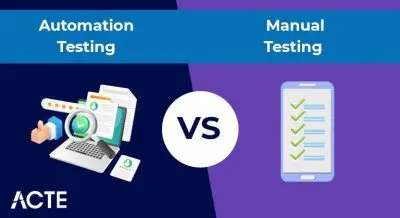
- Introduction to Salesforce Testing
- Importance of Salesforce Testing
- Types of Salesforce Testing
- When to Perform Salesforce Testing
- Salesforce Testing Techniques and Tools
- Challenges in Salesforce Testing
- Future Trends in Salesforce Testing
- Conclusion
Introduction to Salesforce Testing
Salesforce is one of the world’s leading cloud-based Customer Relationship Management (CRM) platforms, widely adopted by organizations across various industries to manage customer relationships, streamline sales processes, automate marketing efforts, and enhance service delivery. Its flexibility and scalability make it a powerful tool for businesses of all sizes. However, with this flexibility comes complexity, especially when dealing with extensive customizations, third-party integrations, and evolving business workflows. Salesforce testing is the process of ensuring that all components within the Salesforce environment function as expected. This includes verifying core features, custom developments, workflows, and integrations to maintain system reliability and a consistent user experience. Because Salesforce operates in a dynamic ecosystem that receives regular updates and introduces new features through seasonal releases, testing plays a crucial role in preventing disruptions. Each update can potentially affect existing functionalities, making regression testing a necessary part of every deployment cycle. Salesforce testing covers both functional and non-functional aspects. Functional testing involves validating custom Apex code, Visualforce pages, Lightning components, and configured business processes. It ensures that each component behaves correctly according to business requirements. Non-functional testing addresses areas such as performance, security, and usability, especially when the system integrates with external platforms like ERP systems, marketing tools, or payment gateways. To be effective, Salesforce testers need a solid understanding of the platform’s architecture, data model, and automation tools such as Flow, Process Builder, and Apex triggers. Familiarity with testing frameworks like Selenium or Provar can also enhance efficiency, especially in complex automation scenarios. Overall, Salesforce testing is essential not only for delivering a seamless user experience but also for supporting continuous innovation while minimizing risks and maintaining business continuity in a rapidly changing digital environment.
Interested in Obtaining Your Software Testing Certificate? View The Software Testing Training Course Offered By ACTE Right Now!
Importance of Salesforce Testing
Salesforce implementations are often deeply integrated into an organization’s core business operations, playing a central role in managing customer data, automating workflows, tracking sales performance, and supporting service functions. Given its critical position in business processes, any failure or malfunction in a Salesforce system can lead to serious consequences such as revenue loss, customer dissatisfaction, or even regulatory non-compliance. This makes Salesforce testing not just a technical task, but a strategic necessity. Testing ensures that all customizations, configurations, and business logic accurately reflect the intended requirements and perform reliably under real-world conditions. It helps confirm that the application aligns with business goals and supports day-to-day operations effectively. One of the primary objectives of Salesforce testing is to verify that new updates or seasonal releases from Salesforce do not introduce bugs or break existing functionality. Since Salesforce is a cloud-based platform that undergoes frequent updates, regression testing becomes especially important to ensure that critical processes continue to function without disruption. Another crucial aspect of testing is maintaining data integrity and security. With the volume of sensitive customer data stored in Salesforce, validating data access controls, field-level security, and user permissions is essential to safeguard information and meet compliance standards. Salesforce testing also focuses on ensuring smooth integration with other enterprise systems such as ERP, marketing automation tools, and third-party applications.

Any breakdown in these connections can hinder business workflows and reduce overall efficiency. Furthermore, by thoroughly validating system performance and user experience, testing contributes to higher user adoption and satisfaction. When end-users trust the system to be reliable and intuitive, they are more likely to embrace it fully, leading to better data quality and improved business outcomes. Overall, Salesforce testing plays a key role in maintaining operational stability and driving long-term success.
Types of Salesforce Testing
- Functional Testing: This type of testing ensures that the features and functionalities of the Salesforce application work according to business requirements. It involves validating workflows, approvals, reports, user roles, and custom objects to confirm that the system behaves as expected.
- Regression Testing: Salesforce releases frequent updates, which may impact existing functionalities. Regression testing verifies that new changes or customizations have not unintentionally broken previously working features.
- Integration Testing: Salesforce often integrates with third-party systems such as ERP tools, payment gateways, and marketing platforms. Integration testing checks data flow, system communication, and functionality between Salesforce and other connected systems.
- User Acceptance Testing (UAT): UAT is conducted by end-users to validate whether the system meets real-world business needs. It ensures that the Salesforce implementation aligns with user expectations and is ready for production use.
- Security Testing: This testing verifies that user roles, profiles, and permissions are properly configured to prevent unauthorized access to sensitive data. It helps ensure data protection and compliance with industry regulations.
- Performance Testing: Performance testing evaluates how well the Salesforce application performs under load. It measures system responsiveness, stability, and scalability when accessed by multiple users or during peak usage.
- Automation Testing: Automation testing uses tools to run repetitive tests efficiently. It is especially useful for regression and integration testing, helping to reduce manual effort and improve test coverage across frequent Salesforce updates.
- Before Salesforce Go-Live: Salesforce testing is essential before launching the platform in a live environment. It validates that all configurations, workflows, permissions, and customizations function correctly.
- During Salesforce Upgrades or Patch Installations: Salesforce releases regular updates that can affect existing functionalities. Testing during and after these upgrades ensures that new features work as intended and that nothing breaks due to changes in the platform.
- After Custom Development or Deployment of New Features: Whenever new features, Apex code, Lightning components, or Visualforce pages are developed and deployed, thorough testing must follow.
- When Integrating Salesforce with External Systems: Salesforce is often connected to third-party systems like ERP, marketing, or billing platforms. Testing ensures accurate data flow, seamless integration, and functional compatibility between all systems involved.
- Periodically for Ongoing Maintenance: Even without major changes, routine testing helps detect hidden issues or configuration drifts over time. Scheduled testing keeps the Salesforce environment stable, secure, and optimized.
- When Migrating Data Into Salesforce: Testing ensures that imported data is complete, clean, and mapped correctly to the right fields and objects. It also checks for duplicates, missing values, or inconsistencies.
- When Exporting Data Out of Salesforce: During data extraction or migration to another platform, testing verifies that data is transferred accurately, maintains integrity, and complies with formatting and business rules.
- Frequent Salesforce Releases: Salesforce delivers updates three times a year, introducing new features, UI changes, and backend modifications. While these updates improve the platform, they can disrupt existing workflows or customizations.
- Complex Customizations: Salesforce allows extensive customization using Apex code, triggers, Visualforce pages, and Lightning components. These customizations, while powerful, introduce complexity that demands thorough unit, functional, and integration testing to avoid performance issues or logical errors.
- Integration Complexity: Salesforce is often integrated with third-party applications such as ERPs, marketing platforms, or billing systems. Testing these integrations is challenging due to varying APIs, authentication methods, data formats, and dependencies across systems.
- Data Volume: Organizations with large volumes of data in Salesforce face unique challenges. High data volume can affect test performance, increase execution time, and complicate data validation. Test data management becomes essential to maintain both speed and accuracy.
- Test Environment Setup: Maintaining sandbox environments that closely mirror the production setup is vital for reliable testing. However, keeping these environments updated with current configurations, data, and integrations can be difficult and time-consuming.
- Automating Tests: Salesforce’s dynamic user interface, frequent UI changes, and evolving APIs can cause automated test scripts to fail. Automated tests require constant updates and maintenance to remain effective and accurate.
- Security and Permission Testing: Salesforce’s complex permission model (profiles, roles, sharing rules) must be tested thoroughly to ensure proper access control. Misconfigurations can lead to data exposure or functionality restrictions for users.
To Earn Your Software Testing Certification, Gain Insights From Leading Blockchain Experts And Advance Your Career With ACTE’s Software Testing Training Course Today!
When to Perform Salesforce Testing

Salesforce Testing Techniques and Tools
Salesforce testing involves a combination of specialized techniques and tools designed to validate the functionality, performance, and reliability of applications built on the Salesforce platform. Due to the platform’s complexity and frequent updates, applying the right testing techniques is crucial for ensuring system stability and business continuity. Common Salesforce testing techniques include functional testing, regression testing, integration testing, user acceptance testing (UAT), and security testing. Functional testing focuses on validating individual features and workflows such as lead conversions, opportunity tracking, or approval processes. Regression testing is particularly important in Salesforce because the platform undergoes regular seasonal updates, which may affect existing functionality. Integration testing ensures that Salesforce communicates properly with external systems like ERP platforms, marketing tools, or payment gateways. User acceptance testing involves end-users verifying that the system meets business requirements and is ready for deployment. To effectively implement these techniques, testers rely on a variety of tools. Selenium is widely used for automating web-based Salesforce applications, though it requires scripting knowledge and careful handling of dynamic elements. Provar is a specialized tool designed specifically for Salesforce testing and offers a low-code interface, making it easier to maintain test cases. Tools like TestNG and JUnit can be used for unit testing Apex code, while JIRA and TestRail are commonly used for test management and bug tracking. For performance testing, Apache JMeter helps simulate load conditions to measure response times and system behavior. With Salesforce’s integration into DevOps practices, tools like Jenkins are increasingly used for continuous testing in CI/CD pipelines. Choosing the right combination of techniques and tools allows teams to identify defects early, reduce risks, and ensure a smooth Salesforce experience for users and stakeholders.
Gain Your Master’s Certification in Software Testing by Enrolling in Our Software Testing Master Program Training Course.
Challenges in Salesforce Testing
Future Trends in Salesforce Testing
The landscape of Salesforce testing is rapidly evolving with the increasing adoption of automation, artificial intelligence, and cloud-native solutions. One significant trend is the rise of Salesforce-specific automated testing tools that leverage AI-driven test generation and maintenance. These tools help reduce the manual effort involved in creating and updating test scripts by intelligently identifying test cases and adapting to changes in the application, thus improving efficiency and accuracy. Alongside this, AI and machine learning are being used to enhance predictive analytics, allowing testers to pinpoint high-risk areas within the Salesforce environment that require more focused and thorough testing. This data-driven approach helps prioritize resources and reduces the likelihood of critical defects slipping through. Cloud-native testing solutions have also gained prominence as organizations embrace cloud DevOps tools and environments. These solutions facilitate seamless integration of testing activities within cloud-based workflows, supporting scalability, flexibility, and faster release cycles. The concept of shift-left testing is becoming increasingly important, where testing starts earlier in the development lifecycle. Early involvement of testers helps catch defects sooner, reducing downstream costs and improving overall software quality. Robotic Process Automation (RPA) is another complementary technology that automates repetitive business processes alongside Salesforce testing efforts. This integration helps streamline workflows, reduces human error, and accelerates end-to-end testing scenarios. Continuous testing is now an essential practice embedded within continuous integration and continuous deployment (CI/CD) pipelines. By automating tests at every stage of development and deployment, teams can maintain a high standard of quality and quickly detect and resolve issues. Together, these advancements are transforming Salesforce testing into a more intelligent, efficient, and proactive discipline that supports faster innovation and robust business performance.
Conclusion
Salesforce testing is a critical process that plays a fundamental role in ensuring that the Salesforce Customer Relationship Management (CRM) platform operates reliably, meets functional requirements, and performs optimally in alignment with an organization’s business goals. Salesforce’s dynamic and highly customizable environment introduces complexity, making thorough and comprehensive testing indispensable. Testing must cover a broad spectrum of areas, including functional testing to verify individual features, integration testing to ensure smooth communication between Salesforce and external systems, regression testing to confirm that new changes do not break existing functionality, and security testing to protect sensitive data and maintain compliance. A successful Salesforce testing strategy involves combining both manual and automated testing approaches. Manual testing is essential for exploratory testing, usability assessments, and validating complex workflows that require human judgment. Meanwhile, automated testing improves efficiency, especially for repetitive regression tests and large-scale test coverage, by utilizing specialized tools designed specifically for Salesforce environments. Popular tools such as Selenium, Provar, and JIRA help streamline test execution, management, and defect tracking. Adopting best practices, including early involvement of testers during development, maintaining updated test scripts, and continuous integration with DevOps pipelines, further enhances testing quality and delivery speed. This approach enables organizations to deploy Salesforce implementations and upgrades confidently, reducing risks of downtime or business disruption. Looking forward, advancements in artificial intelligence, automation, and cloud-native testing solutions will continue to revolutionize Salesforce testing. These technologies promise to increase test accuracy, optimize test maintenance, and integrate testing seamlessly within modern development workflows. As a result, Salesforce testing will become more intelligent, efficient, and aligned with agile practices, empowering businesses to innovate rapidly while maintaining high standards of software quality.




